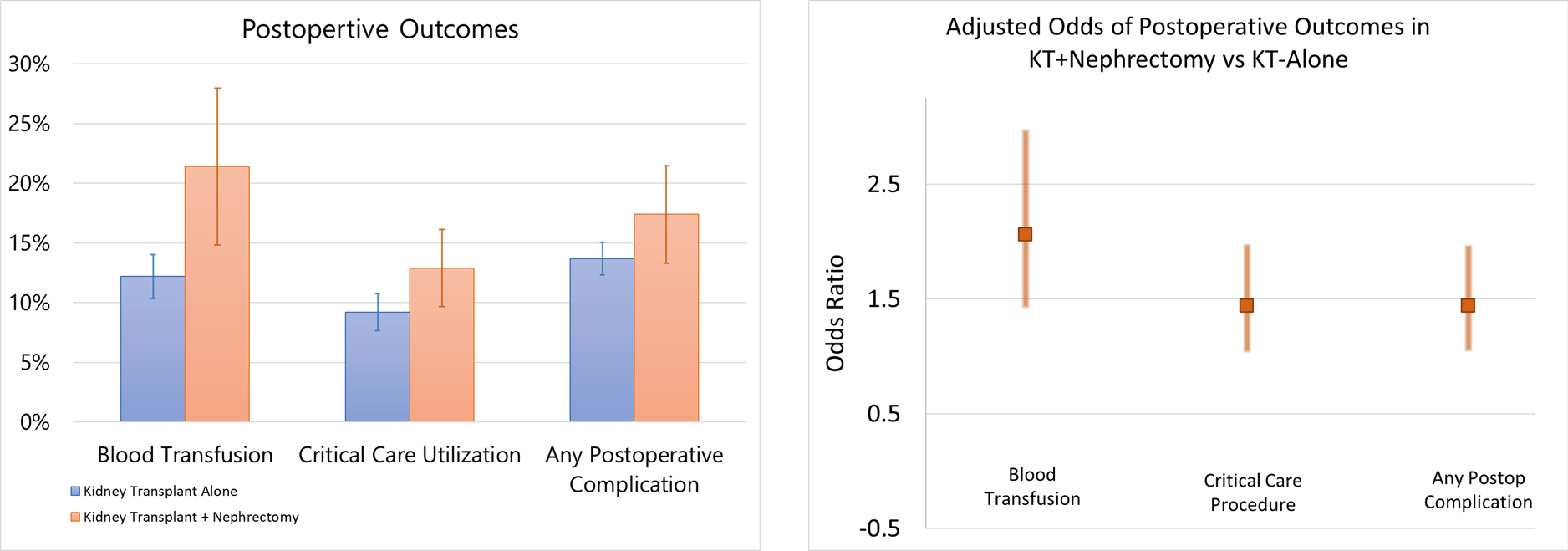Kidney Transplant with and without Native Nephrectomy for Polycystic Kidney Disease: Results of the National Inpatient Sample and the Rationale for a Two-Staged Procedure
Raymond A Jean, *Mehida Alexandre, Peter S Yoo
Yale School of Medicine, New Haven, CT
Objective: To compare the outcomes of patients with Polycystic Kidney disease (PCKD) who underwent kidney transplantation (KT) with/without concurrent native Nephrectomy (KTN).
Design: Retrospective cohort study
Setting: Patients admitted across the United States between 2000 and 2014.
Patients or Other Participants: The Nationwide Inpatient Sample (NIS) between 2000 and 2014 was examined for a diagnosis of PCKD with evidence for KT or KTN.
Intervention(s): None
Main Outcome Measure(s): Logistic regression, adjusting for age, sex, comorbidity, and region, was used to compare groups for the need for blood transfusion, the development of postoperative complications, and the need for critical care interventions.
Results: A total of 4003 hospitalizations were identified, which was representative of 19,302 weighted discharges nationally. In total, 17,625 (91%) surgeries were KT alone, while 1677 (9%) were KTN. In adjusted logistic regression models, KTN demonstrated significantly higher odds for requiring blood transfusion (OR 2.06, 95%CI [1.44, 2.96], p<0.0001), the incidence of postoperative complications (OR 1.44, 95%CI [1.05, 1.96], p=0.02) and the need for critical care interventions (OR 1.44, 95%CI [1.07, 1.95], p=0.02). Other significant predictors for blood transfusion included female sex (OR 1.76, 95%CI [1.45, 2.13], p<0.0001), age over 61 years (OR 1.62, 95%CI [1.24, 2.12], p=0.001) and Charlson comorbidity score ≥4 (OR 1.62, 95%CI [1.07, 2.12], p=0.02).
Conclusions: Among patients with PCKD, in comparison to kidney transplantation with native nephrectomy, KT-alone represents a decreased risk for negative postoperative outcomes. A two-staged procedure should be considered to minimize untoward impact on the allograft. 
Back to 2017 Posters
